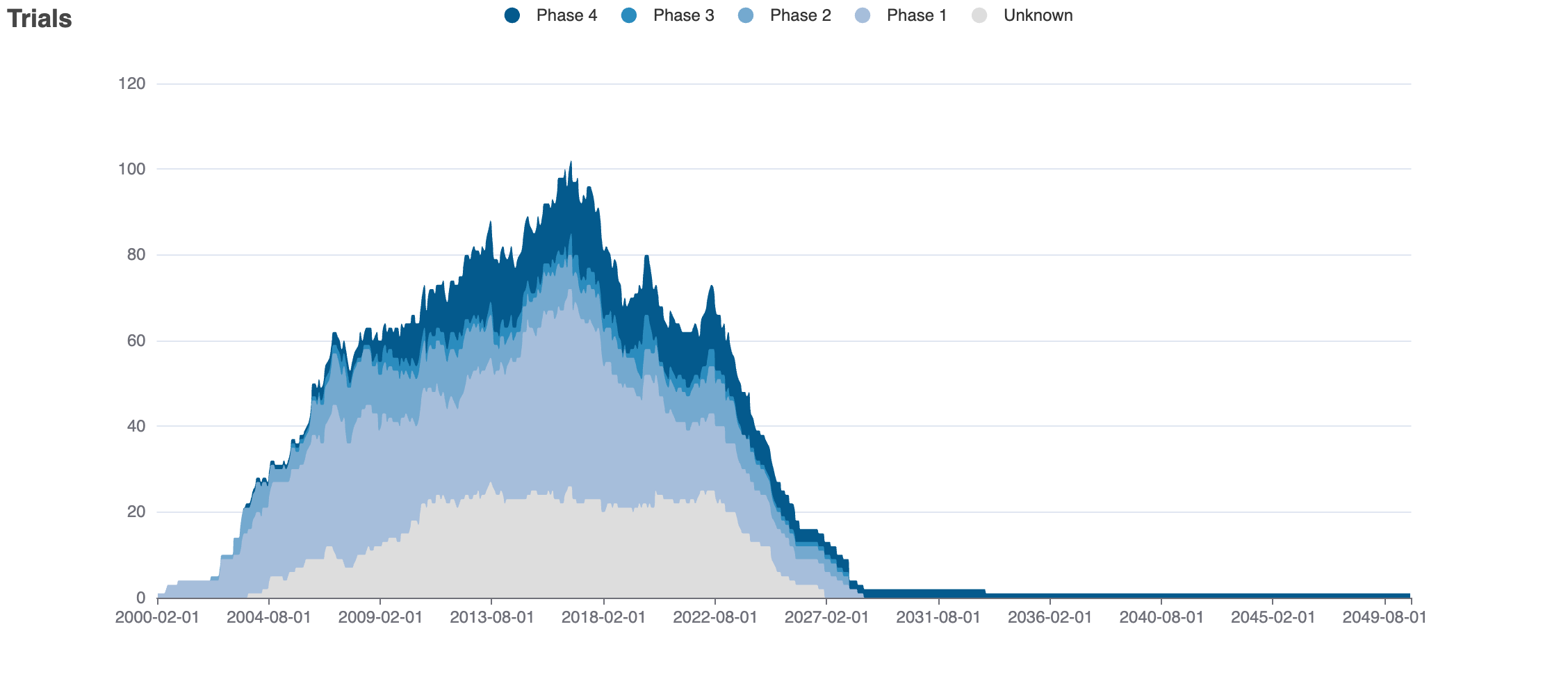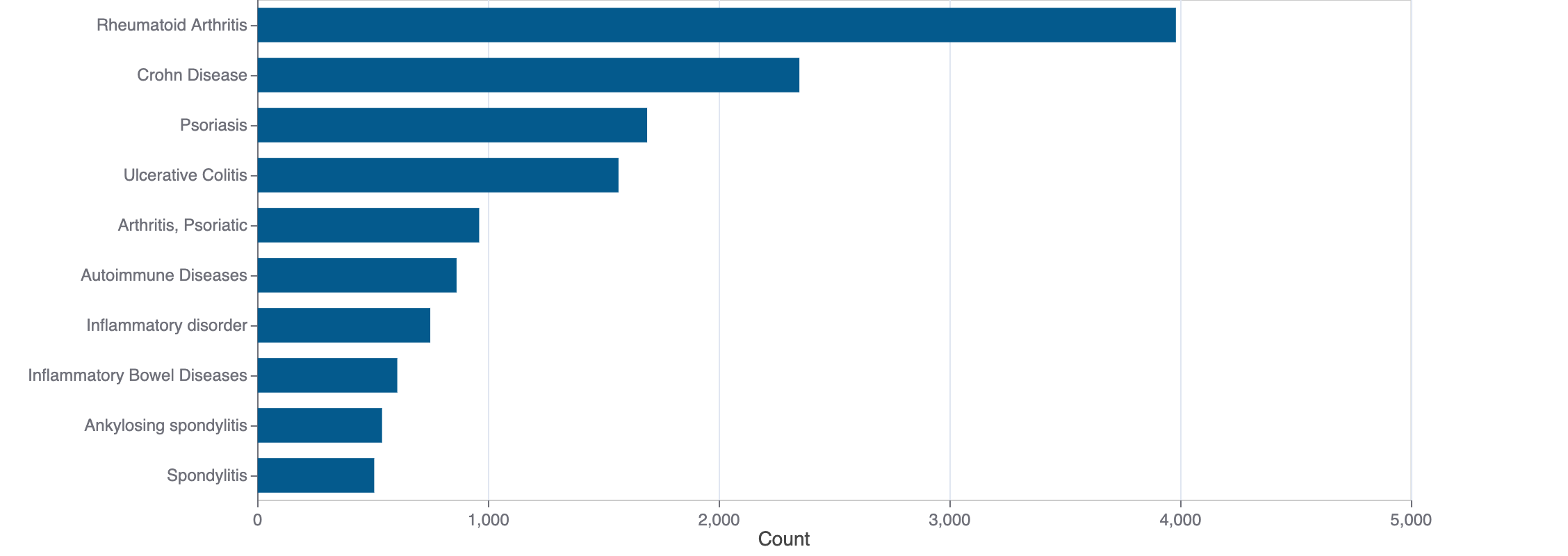ORVEPITANT
Orvepitant is a small molecule pharmaceutical. It is currently being investigated in clinical studies.
Download report
Favorite
Events Timeline
Commercial
Clinical
Drug
Target
Variants
Financial
Trends
Safety
Events Timeline
5D
1M
3M
6M
YTD
1Y
2Y
5Y
Max
Events
FDA approval date
EMA approval date
Patent expiration date
Study first post date
Last update post date
Start date
Primary completion date
Completion date
Results first post date

Mock data
Subscribe for the real data
Subscribe for the real data
Commercial
No data
Clinical
Clinical Trials
11 clinical trials
View more details

Mock data
Subscribe for the real data
Subscribe for the real data
Indications Phases 4
No data
Indications Phases 3
No data
Indications Phases 2
Indication | MeSH | Ontology | ICD-10 | Ph 1 | Ph 2 | Ph 3 | Ph 4 | Other | Total |
|---|---|---|---|---|---|---|---|---|---|
| Depressive disorder | D003866 | EFO_1002014 | F32.A | 2 | 2 | — | — | — | 4 |
| Cough | D003371 | — | R05 | — | 2 | — | — | — | 2 |
| Depression | D003863 | — | F33.9 | — | 2 | — | — | — | 2 |
| Major depressive disorder | D003865 | EFO_0003761 | F22 | — | 2 | — | — | — | 2 |
| Atopic dermatitis | D003876 | EFO_0000274 | L20 | — | 1 | — | — | — | 1 |
| Eczema | D004485 | — | L30.9 | — | 1 | — | — | — | 1 |
| Pruritus | D011537 | — | L29 | — | 1 | — | — | — | 1 |
| Dermatitis | D003872 | — | L30.9 | — | 1 | — | — | — | 1 |
| Post-traumatic stress disorders | D013313 | EFO_0001358 | F43.1 | — | 1 | — | — | — | 1 |
| Traumatic stress disorders | D040921 | — | — | — | 1 | — | — | — | 1 |
Show 4 more
Indications Phases 1
Indication | MeSH | Ontology | ICD-10 | Ph 1 | Ph 2 | Ph 3 | Ph 4 | Other | Total |
|---|---|---|---|---|---|---|---|---|---|
| Healthy volunteers/patients | — | — | — | 3 | — | — | — | — | 3 |
Indications Without Phase
No data
Epidemiology
Epidemiological information for investigational and approved indications
View more details
Drug
General
| Drug common name | ORVEPITANT |
| INN | orvepitant |
| Description | Orvepitant (GW823296) is a drug developed by GlaxoSmithKline which acts as a selective antagonist for the NK1 receptor. It was under development as a potential antidepressant drug, and early stage human clinical trials showed it to have some antidepressant effects, though not with sufficient efficacy to justify further development for this application. It was however considered a successful proof of concept for NK1 antagonists as potential antidepressants, and efforts are continuing to find more potent compounds which might be more effective.
|
| Classification | Small molecule |
| Drug class | tachykinin (neurokinin) receptor antagonists: NK1 receptor antagonists |
| Image (chem structure or protein) |  |
| Structure (InChI/SMILES or Protein Sequence) | Cc1cc(F)ccc1[C@H]1C[C@@H](N2CCN3C(=O)CC[C@H]3C2)CCN1C(=O)N(C)[C@H](C)c1cc(C(F)(F)F)cc(C(F)(F)F)c1 |
Identifiers
| PDB | — |
| CAS-ID | 579475-18-6 |
| RxCUI | — |
| ChEMBL ID | CHEMBL2105667 |
| ChEBI ID | — |
| PubChem CID | 9852175 |
| DrugBank | DB12427 |
| UNII ID | IIU6V0W3JD (ChemIDplus, GSRS) |
Target
No data
Variants
No data
Financial
No data
Trends
PubMed Central
Top Terms for Disease or Syndrome:

Mock data
Subscribe for the real data
Subscribe for the real data
Additional graphs summarizing 100 documents
View more details
Safety
Black-box Warning
No Black-box warning
Adverse Events
0 adverse events reported
© 2020-2025 Collaborative Drug Discovery Inc. (CDD) | Terms of Use